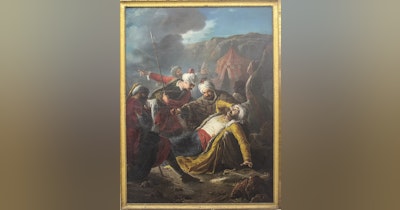The 10th century witnessed a tumultuous period in Islamic history, marked by the emergence of the Qarmatians, a faction that challenged the prevailing Sunni orthodoxy. At the center of this movement stood Abu Tahir Al Jannabi, whose audacious actions, including the sacking of Mecca, left an indelible mark on the Islamic world. Join us as we delve into the captivating tale of the Qarmatians and their controversial leader.

The Rise of the Qarmatians
In the sprawling landscape of the Abbasid Caliphate, the Qarmatians carved out their niche, preaching a doctrine that diverged from mainstream Islam. Rooted in mystical beliefs and a longing for the arrival of the Mahdi, they found a following in the eastern reaches of Saudi Arabia. The allure of their teachings resonated with disenfranchised peasants and discontented souls, paving the way for their ascent.
Qarmatian Belief Practices and Parallels with Communism
The Qarmatians espoused a unique set of beliefs that distinguished them from mainstream Islam. Central to their doctrine was the concept of waiting for the return of the Mahdi, who would bring about a new era and replace Islamic law. Additionally, the Qarmatians practiced a form of communal living, akin to communism, where wealth and resources were shared among the community members. This egalitarian ethos, coupled with their mystical teachings, drew comparisons to communist ideologies, with some scholars highlighting parallels between the two movements.
Abu Tahir Al Jannabi: Visionary or Villain?
Abu Tahir Al Jannabi, born in 906 AD, emerged as the charismatic leader of the Qarmatians, inheriting the mantle of leadership from his father. A man of military acumen and religious fervor, Abu Tahir marshaled his forces to expand his domain and propagate the Qarmatian faith. However, his actions would soon thrust him into the annals of infamy.
The 930AD Sack of Mecca
A Turning Point In a brazen display of defiance, Abu Tahir orchestrated the sacking of Mecca in 930 AD, unleashing chaos upon the holiest city of Islam. The desecration of sacred sites, including the Kaaba and the theft of the Black Stone, sent shockwaves throughout the Muslim world. The magnitude of the atrocity reverberated far and wide, casting a shadow over Abu Tahir's legacy.
The Aftermath and Legacy:
Following the sack of Mecca, Abu Tahir's grip on power weakened, plagued by internal strife and external condemnation. Despite efforts to ransom the pilfered Black Stone, the Qarmatians found themselves ostracized and marginalized. Abu Tahir's demise in 944 AD marked the beginning of the end for the Qarmatian state, paving the way for their eventual defeat at the hands of Abbasid forces.
Conclusion:
The saga of the Qarmatians and Abu Tahir Al Jannabi offers a glimpse into the complexities of religious zeal and political ambition in medieval Islam. Their tumultuous reign, punctuated by the sacking of Mecca, remains a poignant reminder of the perils of fanaticism and extremism. To delve deeper into this fascinating episode, we invite you to listen to the Anthology of Heroes podcast episode dedicated to the Qarmatians and Abu Tahir Al Jannabi.












